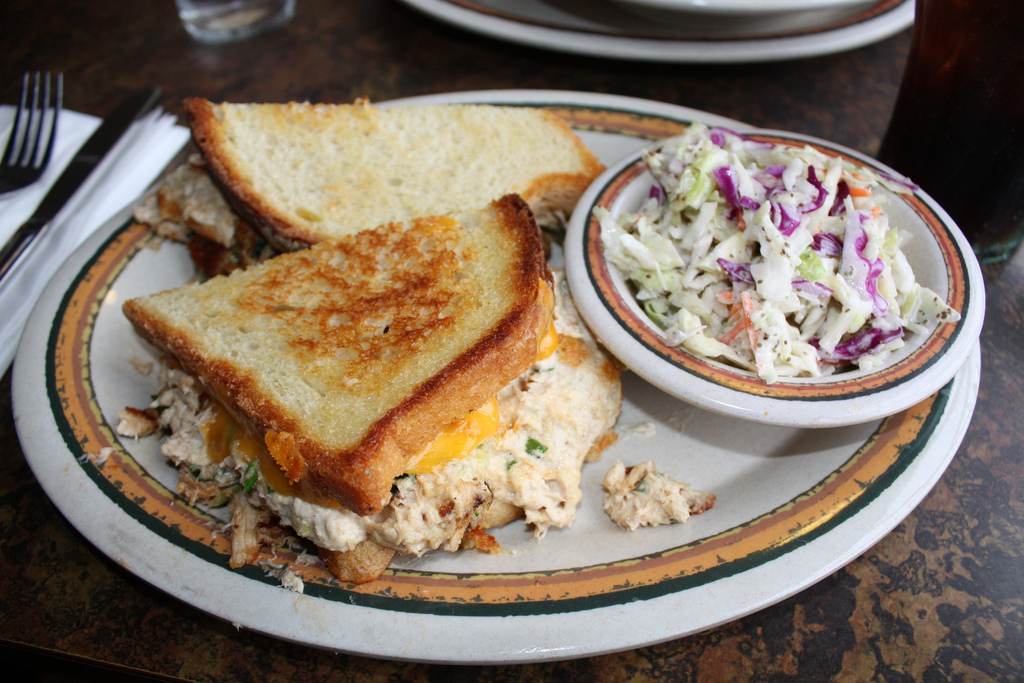What is comfort food? It’s a culinary embrace, a gastronomic sanctuary where flavors intertwine with memories, emotions, and cultural heritage. Comfort food is not merely sustenance; it’s a soothing balm for the soul, a culinary compass guiding us through life’s complexities.
From the heartwarming aromas of a home-cooked meal to the comforting indulgence of a childhood favorite, comfort food transcends taste buds, becoming an intrinsic part of our personal and cultural narratives.
Definition of Comfort Food
Comfort food is a dish or beverage that provides a sense of emotional comfort or nostalgia. It is often associated with childhood memories or happy times, and it can be a way to cope with stress, sadness, or anxiety. Comfort foods are typically high in calories and fat, and they are often sweet or savory.
They can be simple or complex, and they can be eaten at any time of day.
Some common examples of comfort foods include:
- Macaroni and cheese
- Grilled cheese sandwiches
- Chicken noodle soup
- Pizza
- Ice cream
- Chocolate
- Coffee
- Tea
Emotional and Psychological Aspects
Comfort foods can have a powerful effect on our emotions and psychology. They can make us feel happy, comforted, and safe. They can also help us to reduce stress, anxiety, and depression. Comfort foods can be a way to connect with our past and to feel a sense of belonging.
They can also be a way to reward ourselves or to celebrate special occasions.
There are a number of reasons why comfort foods have such a powerful effect on us. First, they are often associated with positive memories. When we eat a comfort food, we may be reminded of happy times from our childhood or of special occasions we have shared with loved ones.
These memories can make us feel happy and comforted.
Second, comfort foods are often high in calories and fat. These nutrients can help to release serotonin, a neurotransmitter that has mood-boosting effects. Serotonin can help us to feel relaxed, happy, and content.
Third, comfort foods can be a way to self-medicate. When we are feeling stressed, anxious, or depressed, we may turn to comfort foods to help us feel better. Comfort foods can provide a temporary escape from our problems and help us to feel more in control.
However, it is important to note that comfort foods can also be unhealthy if they are eaten in excess. Eating too much comfort food can lead to weight gain, heart disease, and other health problems. It is important to enjoy comfort foods in moderation and to make sure that they are part of a healthy diet.
Cultural Influences on Comfort Food
Comfort food is a deeply personal and cultural phenomenon. It is often tied to memories of childhood, family, and home. The foods that we find comforting can vary greatly depending on our cultural background.
In some cultures, comfort food is often associated with simple, home-cooked dishes. In other cultures, it may be more elaborate or exotic. Ultimately, what makes a food comforting is its ability to evoke feelings of nostalgia and belonging.
Examples of Comfort Foods from Different Cultures
- United States:Macaroni and cheese, grilled cheese sandwiches, chicken noodle soup
- Italy:Pasta dishes, pizza, gelato
- Mexico:Tacos, burritos, tamales
- India:Dal, rice, curry
- China:Noodles, dumplings, rice
The Role of Nostalgia and Tradition in Shaping Comfort Food Preferences
Nostalgia and tradition play a significant role in shaping our comfort food preferences. The foods that we associate with comfort are often the same foods that we ate as children. These foods can evoke strong memories of happy times and loved ones.
Tradition also plays a role in shaping our comfort food preferences. In many cultures, certain foods are traditionally served at certain times of year or on special occasions. These foods can become associated with those times and occasions, and they can provide a sense of comfort and familiarity.
Physiological Effects of Comfort Food
Comfort food exerts a profound influence on both our physical and mental well-being. Its consumption triggers a cascade of physiological responses that can impact our bodies and brains.
Upon consuming comfort food, the body releases hormones such as dopamine and serotonin. These neurotransmitters are associated with feelings of pleasure and reward, which can help alleviate stress and improve mood. Additionally, the act of eating comfort food can activate the parasympathetic nervous system, which promotes relaxation and digestion.
Potential Health Benefits
- Stress relief:Comfort food can provide a temporary respite from stress by releasing stress-reducing hormones.
- Improved mood:The release of dopamine and serotonin can help boost mood and alleviate feelings of depression.
- Enhanced sleep:Some comfort foods, such as warm milk or herbal teas, can promote relaxation and aid sleep.
Potential Health Risks
- Weight gain:Comfort foods are often high in calories, sugar, and unhealthy fats, which can contribute to weight gain if consumed excessively.
- Increased blood pressure:Some comfort foods, such as salty snacks, can raise blood pressure.
- Heart disease:Long-term consumption of comfort foods can increase the risk of heart disease due to their high fat content.
Social Aspects of Comfort Food

Comfort food transcends its culinary purpose and plays a pivotal role in shaping social interactions and fostering relationships. It serves as a catalyst for bonding and emotional support, creating shared experiences that strengthen the fabric of our communities.Comfort food traditions and rituals vary across cultures and social contexts.
In many families, Sunday dinners or holiday gatherings are centered around beloved comfort dishes that evoke nostalgia and warmth. These meals provide a space for family members to connect, share stories, and create lasting memories.In times of emotional distress, comfort food can offer solace and comfort.
Sharing a warm bowl of soup or a plate of homemade cookies with a loved one can convey empathy and support, creating a sense of belonging and reducing feelings of isolation.
Nutritional Value of Comfort Food

Comfort foods often provide high levels of carbohydrates, fats, and sugars, which can contribute to feelings of satisfaction and comfort. However, excessive consumption of these foods can lead to weight gain, increased risk of chronic diseases, and other health concerns.
Potential Health Concerns, What is comfort food
- Weight Gain:High-calorie comfort foods can lead to weight gain if consumed excessively.
- Increased Risk of Chronic Diseases:Diets high in processed foods, saturated fats, and added sugars are associated with an increased risk of heart disease, stroke, type 2 diabetes, and some types of cancer.
- Nutrient Deficiencies:Comfort foods often lack essential vitamins, minerals, and fiber, which can lead to nutrient deficiencies if they make up a significant portion of the diet.
Recommendations for Healthier Comfort Foods
- Use Whole Grains:Substitute refined grains with whole grains, such as brown rice, quinoa, or whole-wheat bread, which provide fiber and nutrients.
- Choose Lean Proteins:Opt for lean protein sources like grilled chicken, fish, or beans, instead of fatty meats.
- Limit Processed Foods:Avoid highly processed comfort foods, such as frozen dinners, chips, and sugary snacks, which are often high in unhealthy fats, sodium, and added sugars.
- Add Fruits and Vegetables:Incorporate fruits and vegetables into comfort food dishes, such as adding spinach to mac and cheese or grilling vegetables alongside a burger.
Comfort Food Trends and Innovations: What Is Comfort Food

The landscape of comfort food is constantly evolving, with new trends and innovations emerging to cater to changing consumer preferences. Technology and social media are playing a significant role in shaping how we consume and enjoy comfort food.
Technology and Social Media
- Online Food Delivery:The convenience of online food delivery services has made it easier than ever to access comfort food from the comfort of our own homes.
- Social Media Platforms:Platforms like Instagram and TikTok have become a hub for food enthusiasts to share their culinary creations and discover new comfort food recipes.
Innovative Ways to Create and Enjoy Comfort Food
Beyond traditional comfort food dishes, there is a growing trend towards creating healthier and more innovative versions of comfort food classics.
Healthier Options
- Plant-Based Comfort Food:Vegan and vegetarian versions of comfort food dishes, such as plant-based burgers and mac and cheese, are gaining popularity.
- Lightened-Up Classics:Chefs are experimenting with ways to reduce calories and fat content in comfort food dishes without sacrificing flavor.
Creative Adaptations
- Fusion Comfort Food:Blending elements from different cuisines to create unique and flavorful comfort food dishes.
- Gourmet Comfort Food:Elevating comfort food classics with high-quality ingredients and sophisticated techniques.
Question Bank
What are some common examples of comfort foods?
Comfort foods vary widely depending on personal preferences and cultural backgrounds. However, some common examples include macaroni and cheese, pizza, burgers, ice cream, and chocolate.
How does comfort food impact our emotions?
Comfort food can trigger positive emotions such as nostalgia, security, and contentment. It can also provide solace during times of stress or sadness.
Is comfort food always unhealthy?
While many comfort foods are high in calories and fat, they can be enjoyed in moderation as part of a balanced diet. Healthier versions of comfort foods can also be made using whole grains, lean proteins, and fresh vegetables.
